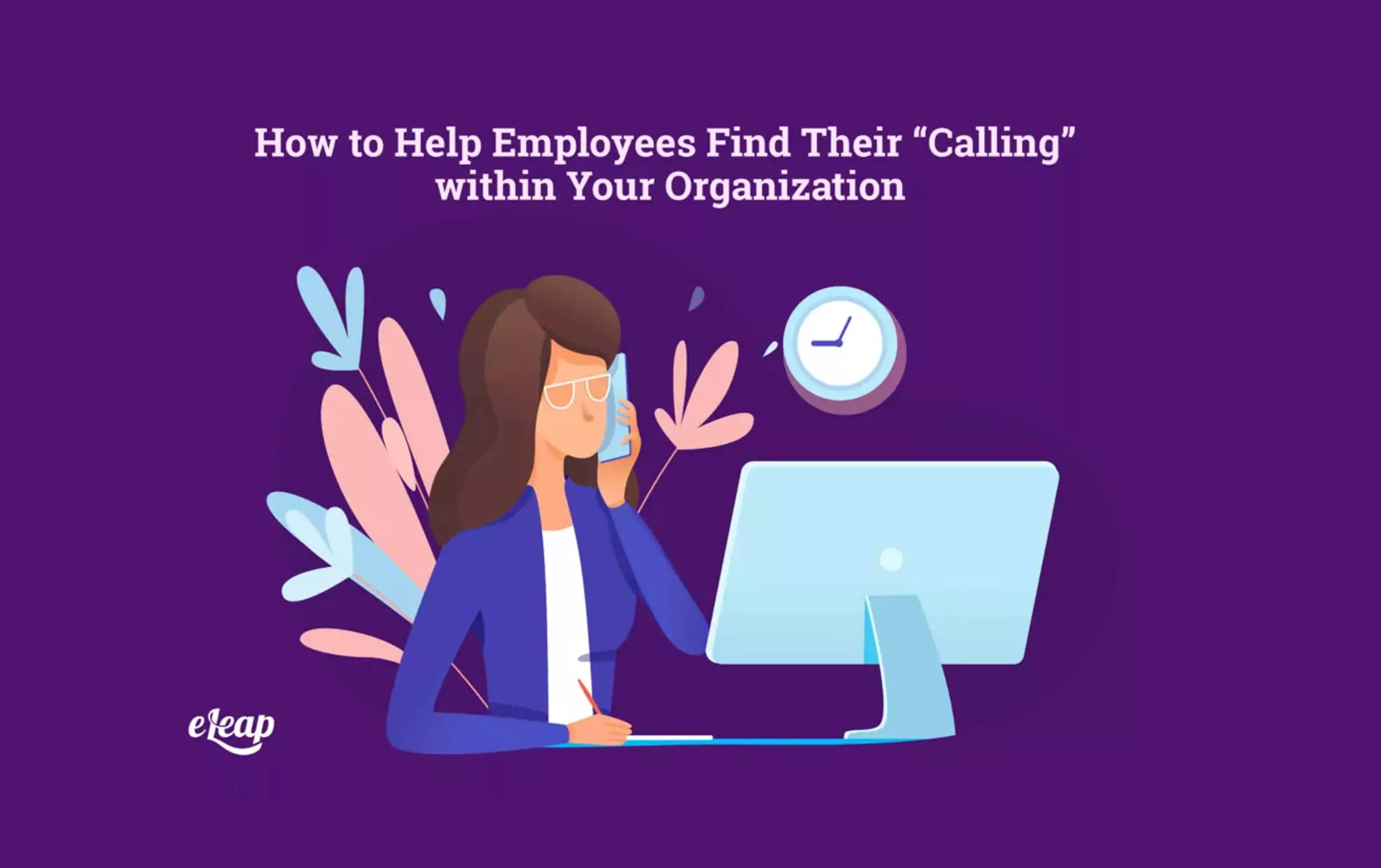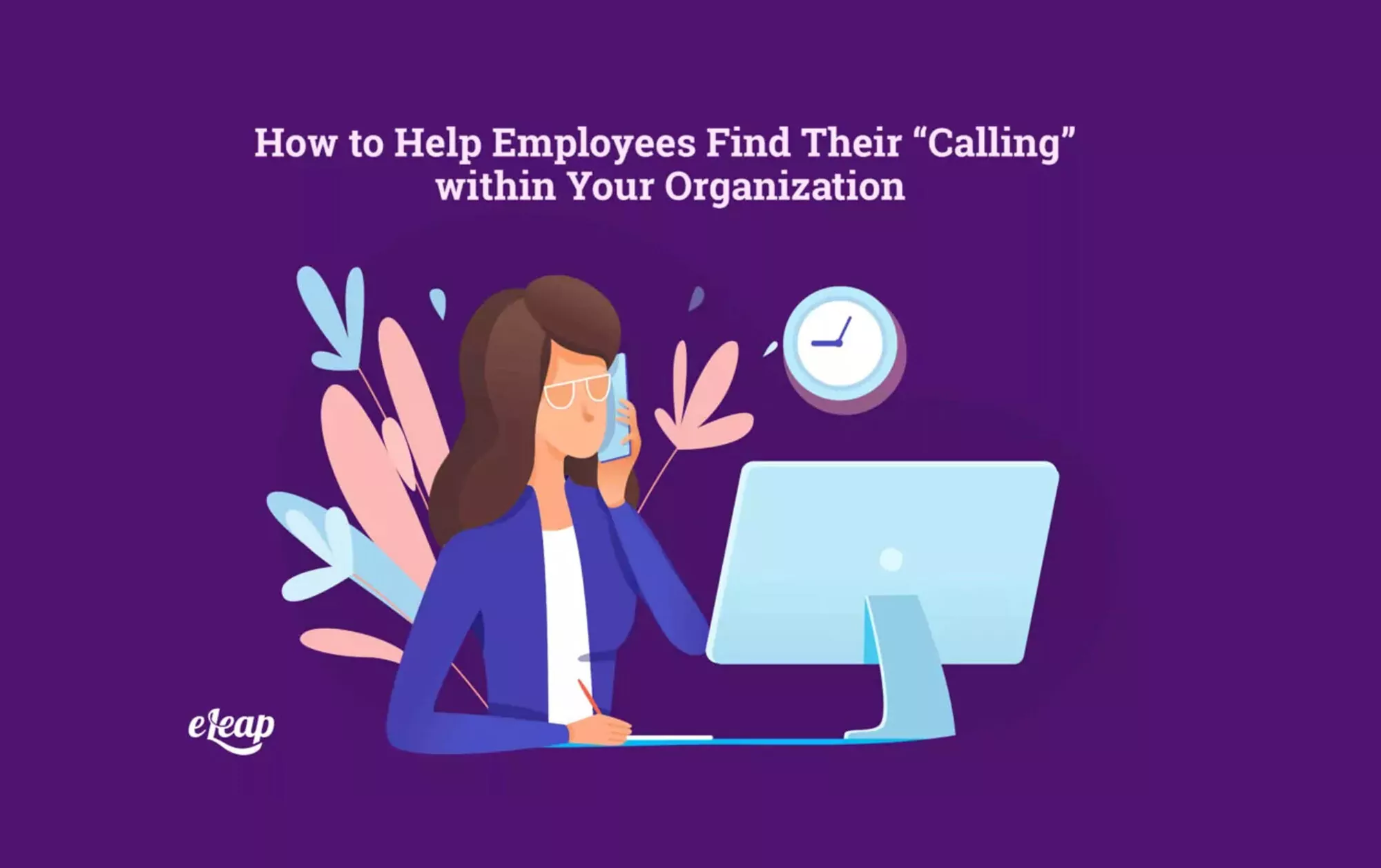How to Help Employees Find Their “Calling” within Your Organization

Struggling to improve engagement within your organization? It’s very common. However, it does not have to be an uphill battle for your business. In fact, it might be as simple as helping your employees find their “calling”.

What Is It All About?
In the past, employers hired people to perform a specific job function or range of functions, and that is about as far as it went. Managers put little thought into whether the work being performed was rewarding to the employee – they were paid to do a job and if they found it unrewarding, they were welcome to go elsewhere.
Those days are long gone. Between the scarcity of talent and the incredible competition from other organizations, businesses can no longer afford to take that sort of stance. Instead, employers are finding that they need to find ways to stand out from the crowd. One way to do that is to help your team members find their “calling”.
What does that mean, though? “Calling” might conjure up images of people on journeys of self-discovery, but the truth is much simpler and more practical. It’s nothing more than finding meaning in what they do. It just comes down to answering the question of why something is done. You could replace “calling” with “purpose” and perhaps be closer to the underlying meaning.
How Do You Help Them Find Purpose?
On the surface, finding purpose in work might seem a little contradictory. Isn’t work the purpose for itself? You do the task because you have to, right? Actually, that is untrue and it is outmoded attitudes like this that result in disengagement and disconnections, employee churn, increased onboarding and hiring costs, and damage to your brand.
Every task, whether it’s sorting mail or hammering out the fine details of a global marketing campaign, has a reason, a why. As a manager, it is your job to help your employees realize and understand why they do what they do within their positions. It’s about relevance, purpose, and connecting the dots with larger organization-wide goals.
How do you help them connect those dots, though?
Show Them Their Why
First, use your expertise and experience in the organization to show them their “why”. Help them see the purpose of what they do in terms of team goals. Then take things wider with a 30,000-foot view and help them see how their efforts support the entire organization. It really just comes down to helping them understand why their position and responsibilities matter in the grander scheme of things. No one wants to feel like an unimportant cog in the machine, and the good news is that no one is unimportant. Everyone does something vital that fuels organizational efforts and growth. Sometimes they just need a little help to see it.
Recognition Matters
Just as no one wants to be just another cog in the machine, no one wants to be invisible, either. Everyone wants their efforts to matter, and for them to be recognized. As a manager or leader, providing that recognition falls directly within your sphere of responsibilities.
Does that mean you need to hand-hold or “coddle” employees? Not really, but if you feel that recognizing hard work and effort is coddling, it could be that your attitude is draining the team of engagement. Good leaders understand that to lead, they need to encourage, support, and do a bit of cheerleading from time to time.
What sort of recognition should you offer? It should fit the situation. There’s no need for certificates and awards constantly. A simple pat on the back and a verbal, “Hey, that was really well done,” are often enough.
You can also take things up a notch. For instance, when a team member puts in exemplary work and wows a client, share the client’s positive feedback regarding the project/experience with the entire team. That builds up not just the individual in question, but also the team and forges stronger ties while showing others the value that each person brings every day.
Ask Important Questions
In addition to the steps above, there are ways to help employees find their purpose through check-ins, one-on-ones, and other conversations. It just takes asking the right questions.
What are you good at doing?
Finding their purpose often ties into doing what an employee is good at, or finding ways to connect what they are good at with a position that offers more value or meaning. For instance, an employee with a background in accounting could put their skills to work through volunteering with a nonprofit. An employee with a background in creative writing might be a good addition to your content marketing team, even if their only experience with the company is as a customer service rep.
What do you enjoy?
A person’s purpose is defined as the intersection of several things, and what they enjoy doing is one of those things. It could be anything – being creative, getting physical exercise, helping others learn and grow – but it should be identified, mapped out, and investigated for its fit within the organization.
Which work makes you feel proudest/best?
What is it that your employees feel best doing? What makes them proudest? By asking these sorts of questions, you begin to surface the inherent value of certain types of work for each employee. From that point, you can begin to make changes that lead to having the right people in the right roles – those who find the most value in the work doing the work.
Become a Purpose-Driven Organization
When you help employees find their purpose and connect with their “calling”, you set yourself apart as an employer of note. That makes your organization more attractive to new hires, but it also helps reduce attrition. When employees love where they work and what they do, they’re far less likely to leave for anything other than life changes. Becoming a purpose-driven organization also bumps up engagement, productivity, and profitability, so it’s definitely a win-win.